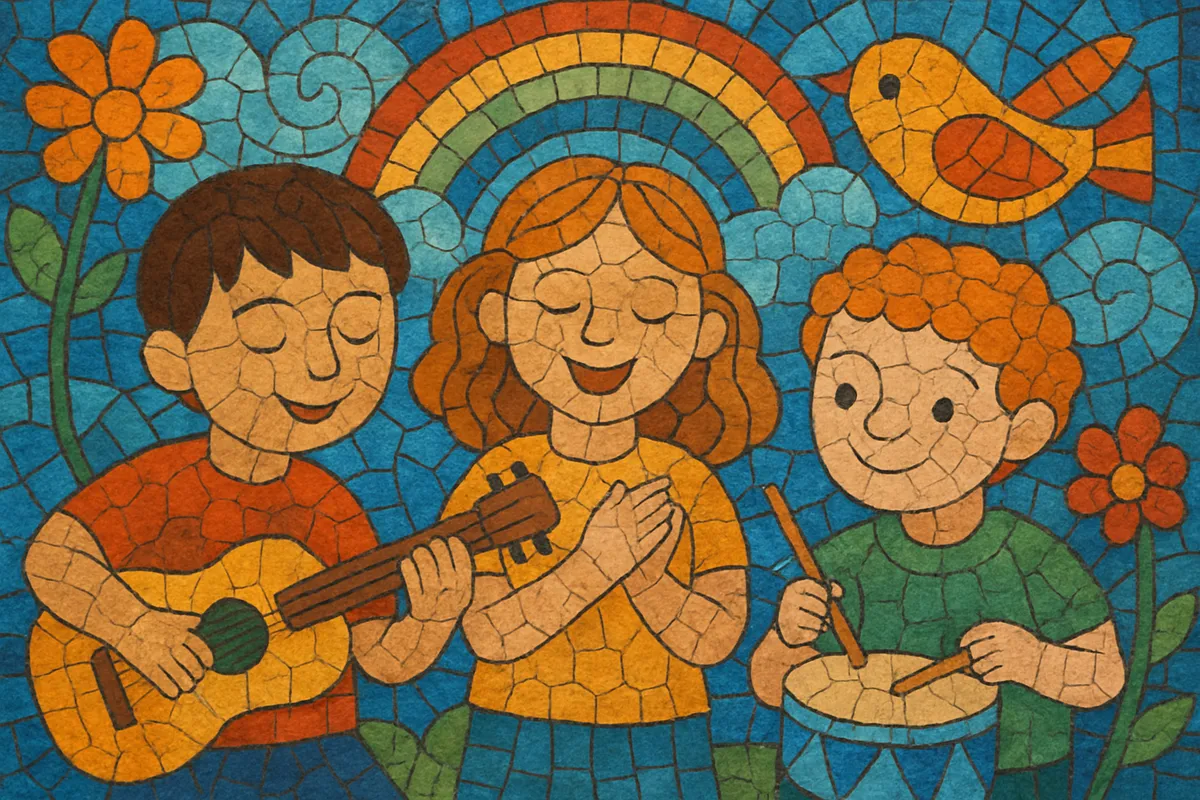
Children's music is a broad category of songs and musical pieces created specifically for young listeners, typically from preschool through the pre-teen years. It prioritizes accessibility, education, participation, and fun.
The style favors simple, memorable melodies; repetitive, call-and-response structures; and clear, friendly vocals. Lyrics are usually narrative or instructional, using everyday vocabulary, rhymes, humor, and imaginative themes (animals, numbers, colors, feelings, and stories). Arrangements often feature bright timbres, handclaps, and small percussion, with moderate tempos that support movement and group singing.
While rooted in folk traditions, lullabies, nursery rhymes, music hall/vaudeville, and classical pedagogy, modern children's music also borrows from pop, rock, country, and global styles. It spans intimate lullabies, classroom sing-alongs, educational anthems, and high-production soundtracks for film, television, and digital platforms.
Children’s music draws on centuries of oral tradition: lullabies, nursery rhymes, and folk songs transmitted by families and schools. Nineteenth‑century songbooks (often branded as “Mother Goose”) standardized many pieces and spread them across classrooms and parlors.
With the rise of the phonograph and radio, publishers and labels in the United States and Europe issued dedicated children’s records and radio segments. Vaudeville and music hall sensibilities—catchy hooks, comic patter, and audience participation—shaped early repertoire. Disney shorts and Snow White and the Seven Dwarfs (1937) established the template for cinematic children’s songs.
School music programs and public broadcasters expanded the audience for children’s songs. Folk revivalists and educators produced sing‑along albums and classroom material, emphasizing call‑and‑response, rhythm games, and social learning. Television began to anchor the genre in households, blending education and entertainment.
Children’s television series normalized sophisticated songwriting for kids—memorable, pedagogical tunes about numbers, letters, emotions, and community. At the same time, touring performers popularized gentle, eco‑ and kid‑centric concerts, proving children’s music could sustain full careers and large live audiences.
The 1990s saw kid-focused bands and high‑energy live acts, along with the rise of the “kindie” (indie-for-kids) scene in the 2000s. Artists blended rock, folk, country, and world styles with child-friendly lyrics, while independent labels and family festivals supported the ecosystem.
YouTube and streaming platforms transformed discovery and scale. Nursery rhymes and original songs reached global audiences via animated channels and short-form platforms; simple, danceable hooks and bright production drove sing‑along virality. Multilingual releases, inclusive themes, and sensory-friendly production became increasingly common.

